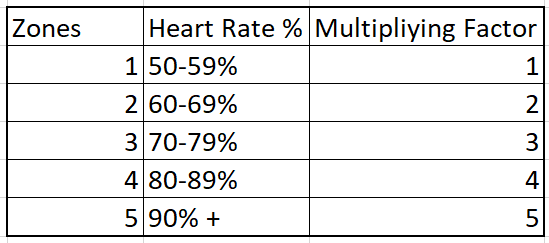|
There is no doubt that being able to quantify an athletes training load is important. Being able to do this allows us to modify the training load of an athlete at various points through the season, which is important when an athlete is targeting times of year where they want to peak. The frequency duration and intensity of training all contribute to the training effect, and as coaches we want to allow for overreaching to create positive adaptations to training, without causing overtraining which can have adverse effects on performance and lead to injury and/or chronic fatigue. To be able to allow athletes to have positive adaptation to training, and peak for competition, requires us to be able to accurately quantify training load. The wide range of modalities of training that CrossFit incorporates can make this more complex than in single modalities sports. Quantifying the load of a strength training session is relatively straight forward (load x sets x reps), but as CrossFit incorporates conditioning sessions that vary greatly in duration and intensity, how can we accurately compare the two? Rate of Perceived Exertion A relatively simple method of doing this is using the athletes rate of perceived exertion (RPE). Simply asking the athlete to rate the difficulty of a training piece on a scale of either 1-10 or 6-20. We can also take this one step further to account for the duration of training, by multiplying the RPE score by the duration of the piece in minutes. Whilst this is easy to use it is dependent on an athlete’s understanding of the method, and the accuracy of their own perception of effort. Whilst this has been shown to be an effective measure during steady state exercise, there is less of a correlation between an athletes RPE and physiological measures of intensity as the intensity of exercise increases. Heart Rate Monitoring Heart rate monitoring is also popular method of measuring exercise intensity. It is important when using heart rate as a measurement tool that individual differences are taken into account due to the large individual differences in how people respond to exercise. A more accurate measure may be heart rate reserve, as this takes into account both resting and maximal heart rates, accounting for some of the individual difference. Heart rate reserve (HRR) can be calculated as follows – HRR = (HRex-HRrest) x100/HRmax-HRrest HRex is the average heart rate of the session, HRrest is the individuals resting heart rate and HRmax is the individuals maximum heart rate. The benefit of HRR reserve is that it takes into account the individuals resting and maximal heart rate. It also gives us a single number which can be easily used to compare training load between sessions. It is important to keep in mind though, that day to day heart rate variation is around 6 beats per minute, and can be further affected by environmental conditions. Training Impulse Training Impulse (TRIMP) is another method of quantifying a training session, again giving us a single number to work with. Like HRR, TRIMP uses average heart rate, maximal heart rate and resting heart rate, but also includes training duration. TRIMP can be calculated as follows – TRIMP = duration of training (min) x ∆HR ratio x Y. The ∆HR ratio value = (HRex-HRrest)/(HRmax-HRrest). Y = 0.64e1.92x for males and Y=0.86e1.67x for females, e=2.712 and x=∆HR ratio The Y value is a weighting factor that emphasizes high intensity activity and is used to avoid giving disproportionate importance to long duration, low intensity exercise compared with intense short duration activity. The benefit of this equation is that it again allows for a training session to be quantified using a single value and it is adjusted to consider the effect of high intensity exercise, however the equation itself is a little long winded. It also requires steady state heart rate measurements, and its accuracy maybe reduced in interval type workouts. Summated Heart Rate Zone Score. The summated heart rate zone score is a modification to the calculation of training impulses that allows the quantification of interval training. The accumulated duration (mins) spent in each heart rate zone is calculated and then multiplied by a multiplier factor for each zone to account for the differences in intensity as show below. Whilst this method sounds appealing, the broad range of each zone may increase or decrease the calculated load disproportionately, and athletes who spend most of their training time doing high intensity exercise may find their training load is overestimated compared to the TRIMP method, and vice versa.
Summary As you can see there are a range of methods that can be used to quantify training load, dependant on the resources available to the coach. RPE is a simple way of quickly gathering data from your athlete but may lack accuracy, whilst the use of heart rate monitors can greatly increase the accuracy of calculating the training load of a session but is dependent on the availability of a heart rate monitor and the time to run the equations necessary to give a usable and accurate value. The answer is dependant on the time and resources available to you as a coach, and the willingness of the athlete to feedback the necessary values, particularly if the coaching is done remotely. Whichever method is used though, it is an important tool in the quantification of your athletes training load, and allows you to successfully manage your athlete through an increasingly long season.
1 Comment
|
AuthorSam Henderson Archives
May 2019
Categories |

 RSS Feed
RSS Feed